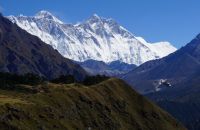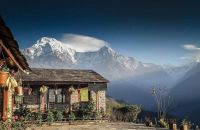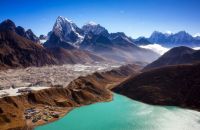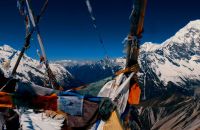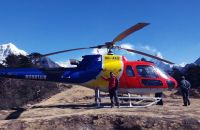Talk with our local travel specialist who can help organize your trip.
Top 10 FAQs for Manaslu Trek in Nepal
Trekking and mountaineering are two of the most popular activities chosen by tourists visiting Nepal. This Himalayan nation has eight of the fourteen highest mountains in the world, making it a great place to experience amazing outdoor adventures. Come spring and autumn, the peak tourist seasons, the slopes and the foothills of Nepal’s high mountainous regions teem with trekkers and mountaineers from all over the world. While the world-famous Everest and Annapurna trails receive a huge chunk of visitors, the Manaslu Region receives only a select few. Remote and off-the-beaten-track, the Manaslu trekking trail promises a wealth of opportunities to those looking for an unforgettable Himalayan adventure.
One of the pristine and least visited Himalayan trekking destinations in Nepal, the Manaslu Region offers trekkers an edgy adventure coupled with an authentic cultural experience. The Manaslu Trek takes you deep into the heart of Mount Manaslu, the eighth-highest mountain in the world. Known as the ‘Spirit Mountain’ for its powerful spiritual energy, the foothills of Manaslu are inhabited by indigenous mountain communities that regard the mountain as a guardian deity. Living under the shadows of the mountain are Nubris, and Tsumbas, who migrated from Tibet centuries ago but have still preserved their Bon and Tibetan Buddhist culture and traditions.
The Manaslu Trek starts from the Budi Gandkai River valley filled with lush tropical forests and banana plantations. The valley is home to high-caste Hindu Brahmins and Chettris, as well as Gurungs and Tamangs. Gorkha, the hilly district in which Manaslu Region is located, is a historic place. It’s the birthplace of the Nepalese king, Prithvi Narayan Shah, who unified Nepal and gave it its present form.
The Manslu Trek winds across the Budi Gandaki River Valley and reaches the high-altitude villages of Samagaon and Samdo in the Nubri Valley. Along the way, you can take some fascinating detours that will lead you to locations that were only made accessible to outsiders at the beginning of this century. It wasn't until 2008 that the Manaslu Region's secluded Tsum Valley opened to visitors. Centuries-old customs and traditions are still practiced in the isolated valley of Tsum.
The most thrilling section of the trek is the dangerous crossing of the Larkya La, a 5,165-meter-high mountain pass. After crossing the pass, the trail enters the Annapurna Conversation Area and finally ends at the beautiful settlement of Dharapani. To get to Kathmandu, there are either buses or jeep rides from Dharapani. Those who still haven’t had their fill of the Himalayas can continue walking and take the connecting route to the Annapurna Circuit from Dharapani.
The Manaslu Trek is a true Himalayan trekking experience with breathtaking landscapes and mountain culture. Due to the restricted access in the region, there is very little tourist traffic, and the communities have mostly maintained their original character. Manaslu Trek is therefore best suited for people who wish to see the authentic Nepalese mountain life and scenery free of crass commercialization.
If you are planning a trek to Manaslu and have some queries related to the adventure, you have come to the right place. Here are the answers to the 10 most commonly asked questions concerning the trek.
Table of Content
- How Difficult Is Manaslu Trek?
- How Much Does Manaslu Trek Cost?
- How Long Does Manaslu Trek Take To Complete?
- Do You Need A Guide For The Manaslu Trek?
- Is Manaslu Circuit Trek Safe?
- What Is The Degree Of Difficulty At Larke La Pass?
- How Do I Prepare For The Manaslu Circuit Trek?
- What Permits Are Required For The Manaslu Trek?
- When Is The Best Time For The Manaslu Trek?
- What Are The Accommodation Options On The Manaslu Trek?
1. How difficult is Manaslu Trek?
The Manalu Trek is rated as strenuous. This is not an easy trek and definitely not recommended for novice hikers. There are numerous river crossings and a lot of ups and downs. You'll have to ascend steep hilly slopes and walk past jagged cliff faces. The most difficult portion of the journey is the crossing of the 5165-meter-high mountain pass of Larkya La. You will need to walk on snow and climb a difficult trail in order to cross the pass. Freezing cold and low levels of oxygen further make the crossing difficult.
The trek is physically draining as there are many ups and downs. Numerous switchbacks and river crossings make the journey exhausting. This trail might be dangerous in places because it crosses landslide-prone zones. The trek, however, does not involve technical climbing. The footpaths are well-trodden and easy to walk. Locals also use these foot trails, so the trails are well maintained.
2. How much does Manaslu Trek cost?
The cost of the Manaslu Trek varies depending on the outfitter. The agency you select, the services you are willing to pay for, and the amount of money you plan to spend on trial amenities (such as hot showers, Wi-Fi, food, and drinks) will all affect the cost of the trek. The agency will charge you less if you choose only guide and porterage services and opt to pay for the meals and accommodation on your own. You will have to fork up a sizable amount if the cost of your vacation includes lodging, meals, and transportation, in addition to guide and porter services. To ensure a hassle-free trek, it is best to let the outfitter handle all the logistical aspects. Trekking permits are included in the total cost.
3. How long does Manaslu Trek take to complete?
The itinerary you select and your walking speed throughout the trek will determine the duration of your trek. It usually takes eleven or fourteen days to complete the Manaslu Trek. That being said, the hike could take up to eighteen days, depending on side trips and detours. Visiting Tsum Valley requires an additional four to five days, and most hikers choose to include it in their itinerary. The Manaslu trail spans around 180 kilometers from Machakhola to Dharapani.
4. Do you need a guide for the Manaslu Trek?
Yes, trekking with a local guide is mandatory on the Manaslu Circuit. Since Manaslu Region is a protected zone, solo or independent entry by outsiders is prohibited. There should be a minimum of two people in a trekking group.
5. Is Manaslu Circuit Trek safe?
While the terrain at some sections of the Manaslu trail is dangerous, the trek is overall a safe one, as you will have a trained local guide guiding you. Traveling with a guide makes the Manaslu Circuit Trek safer than most high-altitude hikes. The path will be easy to navigate with a guide since he will know which track to take and how to travel from point to point quickly and safely.
The Manaslu Region consists primarily of untamed terrain, and although there are human settlements en route, these are situated far apart. At times, getting from one village to the next may require walking for six to eight hours. Even though the track is well-marked and accessible by foot, having a guide will keep you secure. Also, he will take care of all the logistics, which will reduce the tension on your journey.
While hiking, it's crucial to look after your health too. It's never safe to hike at high altitudes, and you should always take the necessary safety measures to prevent altitude sickness. Spending some days resting and acclimatizing at lower altitudes before ascending higher will minimize the chances of getting AMS. Drinking water constantly to prevent dehydration is also important. Dehydration is one of the chief causes of altitude sickness.
Featured Trips
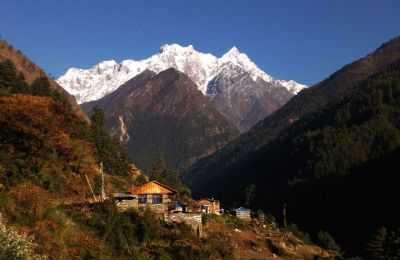
Manaslu Circuit with Tsum Valley Trek - 24 days
Manaslu Circuit with Tsum Valley trek in the off-beaten path of northwestern Nepal witnesses remote village lifestyle while circling the eighth highest mountain of the world. The 24 days long trek traverses to the beautiful Annapurna and Manaslu region to explore the rich wilderness and hidden valleys.
Inquire Now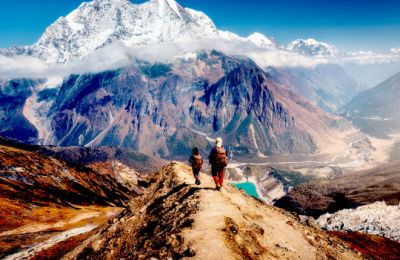
Short Manaslu Circuit Trek via Arughat - 14 days
Short Manaslu Circuit Trek via Arughat is best for those looking to witness all of the wonders the Manaslu region offers in the quickest way to complete Manaslu Circuit in 14 days.
Inquire NowWhere to travel next?
Get help from our travel specialists for holiday ideas that matches your interests.
6. What is the degree of difficulty at Larke La Pass?
The highest point on the Manaslu Trek is the Larkya La Pass, which is located at a height of 5165 meters. Walking on snow and ice and climbing and descending on steep areas make crossing the pass challenging. The climb from Dharamshala to the Larya La pass takes about eight or nine hours. Walking on deep snow and an icy trail will test your endurance to the maximum.
The crossing of the pass begins before the sun comes up. It's best to get an early start because the weather tends to get worse over the day. Hiking up to the pass across icy trails and boulder fields can be mentally and physically taxing. The extreme temperature and low oxygen concentration also make the hike difficult.
The steep descent to Bimthang from the summit of the Larkya La peak is equally as challenging and taxing as the climb. The magnificent and mesmerizing vistas of the snow-covered spires of Manaslu, Annapurna II, Kangguru Himal, and Himlung are a major reward for completing the difficult Larkya La crossing.
7. How do I prepare for the Manaslu Circuit trek?
Before you begin your trek, it's crucial to be in a reasonably fit state. You can begin your training at least six months prior to your expedition. You can jog, climb long staircases, and go on strenuous hikes with a bulky backpack. To develop your leg, back, and core muscles, you might start doing strength-building activities. You can increase your stamina and strengthen your heart and lungs by engaging in regular cardio exercises like cycling, running, aerobics, and swimming.
During your trek preparation, it's also critical to maintain a healthy diet. You can boost your immune system by consuming the right kind of food. It’s not only important to build your muscles; you should have an immunity-boosting diet too, as having strong immunity will keep you safe from illnesses and stomach bugs.
If you reside in a low-lying place, it will be harder for you to prepare for a high-altitude hike. But you can always train in a simulated environment. Training in a simulated high-altitude environment will help a lot and prepare you to face the challenges of high altitude on the trail. While on the trail, staying hydrated will lessen the impact of high altitude on your body. In addition, taking deep breaths, staying warm, walking at a slow but steady pace, and never pushing yourself too hard while hiking will keep you in a good physical state.
8. What permits are required for the Manaslu Trek?
The permits required for the Manaslu Trek are:
Manaslu Conservation Area Permit:
NRS 1000/- per person for citizens of SAARC countries (India, Bhutan, Bangladesh, Pakistan, Maldives, Afghanistan and Sri Lanka)
For foreign nationals, the cost is NRS 3000 per person.
Manaslu Restricted Area Permit:
From September to November, the cost is USD 100 per person for a week plus an extra USD 15 per day after the 7th day.
From December through August, USD 75 per person for a week, plus an additional USD10 per day after the 7th day.
Annapurna Conservation Area Project Permit:
For citizens of SAARC countries, NRS 1000 per person
For other foreign nationals: NRS 3,000 per individual
9. When is the best time for the Manaslu Trek?
March through May and September through November are the ideal months to undertake the Manaslu Trek. These are the months when the skies remain generally clear and there is less precipitation.
Trekking in the summer season is not recommended as there are many landslides in the area due to heavy rainfall. During winter, there is heavy snowfall at Larkya La, making it difficult to cross.
You may also plan your trip to coincide with one of the many Buddhist festivals observed in the area.
10. What are the accommodation options on the Manaslu Trek?
There are teahouses, lodges, and homestays in every little settlement along the trail, so lodging is not an issue.
The teahouse amenities on the Manaslu Circuit are simpler and more primitive than those on the Everest and Annapurna trails. Compared to the wide range of lodging options (luxury to budget) available on the EBC trail, the Manaslu trail only offers basic lodging. The teahouse may offer simple rooms with plywood walls and two small beds. For bedding, a foam mattress, quilt, or blanket, and pillow are provided. The rooms tend to get pretty cold at night as houses in Nepal do not have central heating. The teahouses have a large common area with a stove in the middle, where guests can warm themselves, dine, and spend their time.
However, in recent years, local entrepreneurs of the Manaslu Region have upgraded the teahouse amenities due to the rise in traffic on the trail.
Featured Trips
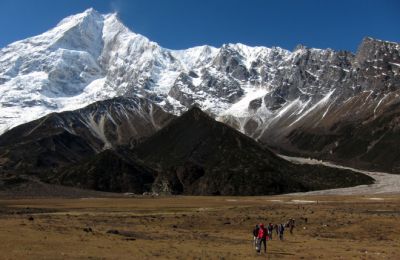
Manaslu Trek via Barpak and Laprak - 17 days
Manaslu Trek - 17 days is an off-beat trekking adventure with a fascinating cultural experience. Walk to the base of Manaslu, the eighth highest peak in the world.
Inquire Now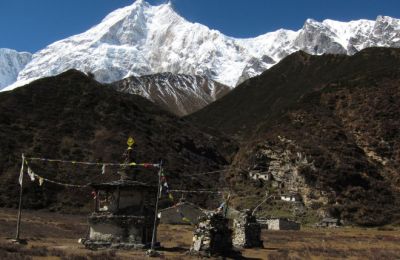
Manaslu Circuit and Nar Phu Valley Trek - 22 days
Nar Phu valley and Manaslu trek is a hidden gem that allows you to explore the unspoiled valley with unique culture and traditions. During the 22 days long Trek, you will witness the geographical diversity of Nepal.
Inquire NowWhere to travel next?
Get help from our travel specialists for holiday ideas that matches your interests.
- Written by: Naba Raj Amgai
Updated: Oct, 6, 2024


.jpg)
.jpg)

